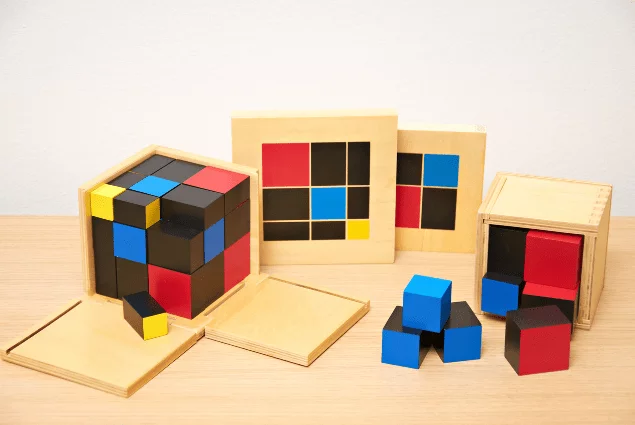From their earliest age, numbers are part of a child’s world. What child doesn’t love telling you how old they are?
One of the best features of a Montessori education is that it makes math fun and interactive for kids. Instead of just numbers on papers, Montessori brings math concepts to children through fun, interactive objects that demonstrate math through shapes and colors.
The Montessori Math Philosophy
Dr. Maria Montessori believed that people are naturally inclined to create order, to organize, to observe relationships and quantify patterns. With the proper guidance and nurturing, everyone can develop the ability to reason and to calculate.
Young students are most sensitive to learning mathematical concepts between the ages of four and six, she believed, and fittingly, Montessori’s math lessons work best in introducing concepts to young children.
Math in the Montessori Classroom
Montessori education introduces mathematics to children through touch, shapes and “feel.” In the sensorial area of a Montessori classroom, students can get their first experience with geometry through shapes and learn other mathematical lessons through the five senses.
Through use of blocks, shapes and colors, students — especially younger ones — get a hands-on feel for how numbers work as a part of their universe. Here are some of the common math materials that you can find in a Montessori classroom:
- The golden beads are often used to introduce the concepts of addition, subtraction, decimals and squaring numbers by allowing students to manipulate the beads in units of ten.
- The wooden rods, usually colored red and blue, help children develop the concept of numbered sequences.
- Other colorful items, like the pink tower, help build an early understanding of sizes and dimensions as children stack the pink blocks into its tower.
- With the brown stairs, young Montessori students learn a similar lesson in analyzing sizes and building progressions.
- Numbered cards are also used in many Montessori classrooms to help develop further knowledge of numbers, letting children mix and match the cards to help build counting skills and better understand mathematical concepts.
Montessori Math at Home
As a parent, you can harness the principles of Montessori education to begin introducing your child to math concepts at home. Here are a few simple ways to do this:
- Make it count in the kitchen: Filled with measurements and amounts, recipes offer ready-made math lessons for your youngster, who can help by counting out ingredients and watching as you add up cups and tablespoons.
- Learn more at the store: Having your child help count out items at the grocery story and tally up the change from the cash register gives them an early lesson on the practical applications of mathematics.
- Play the game: Try making shapes and patterns with common objects, like their crayons, pencils and stickers. In the car, count road signs, yellow cars or whatever else they see. And be sure to utilize the shapes and patterns found in board games, which offer an easy way to bring math lessons home.

